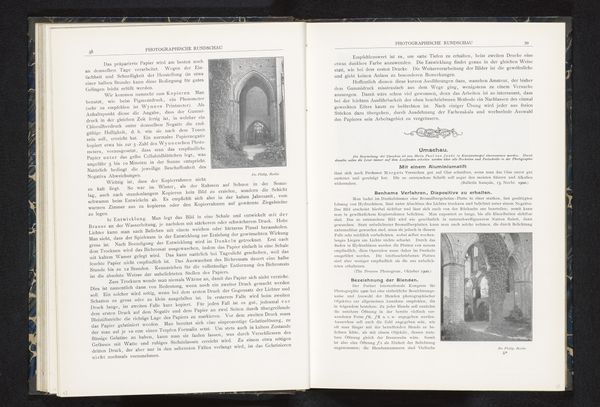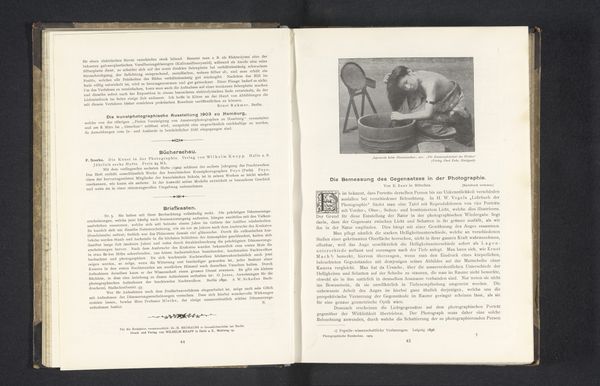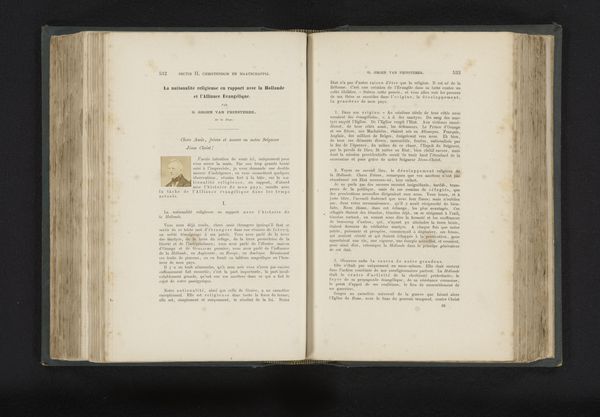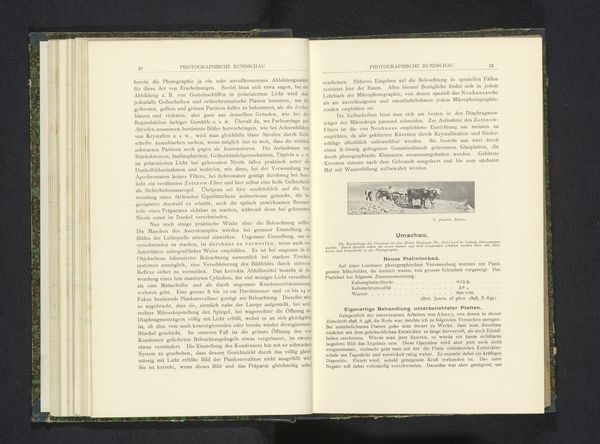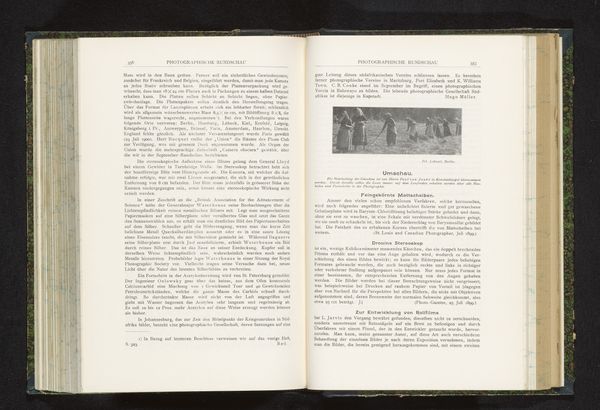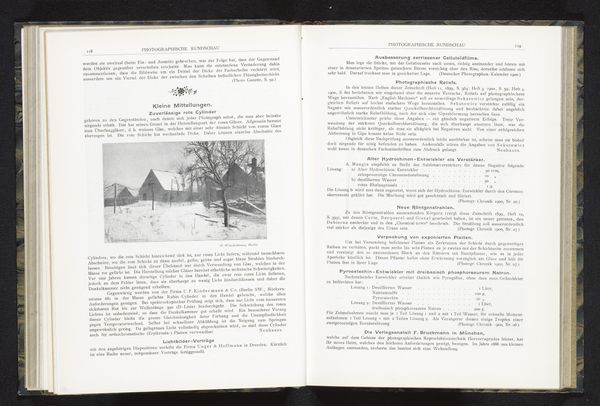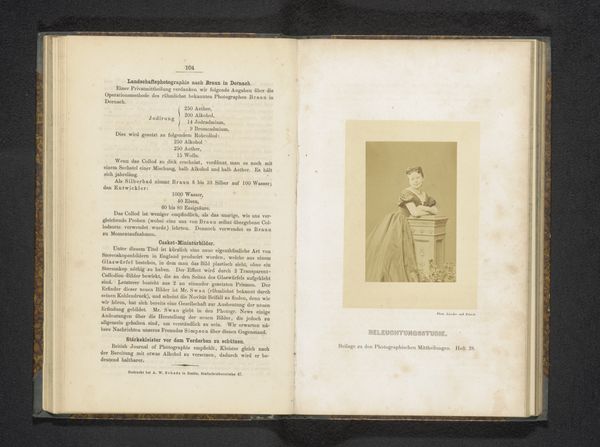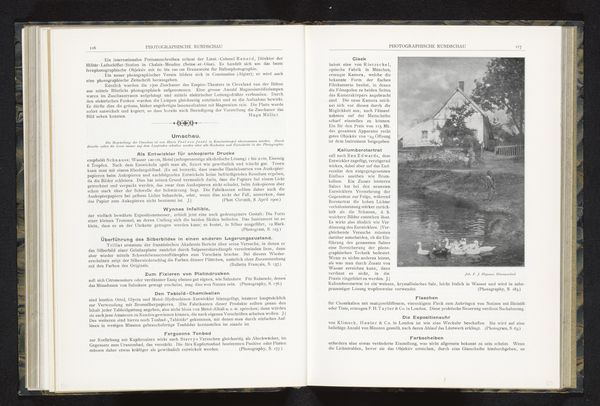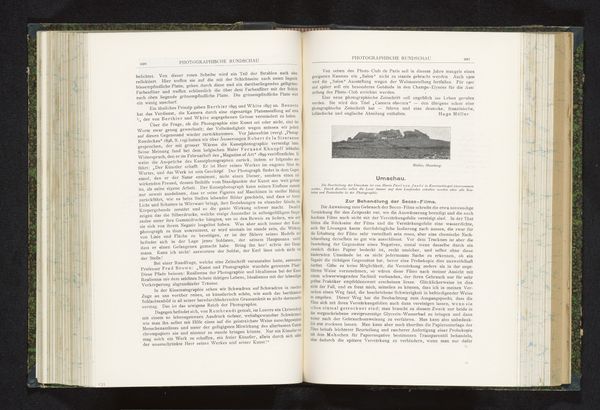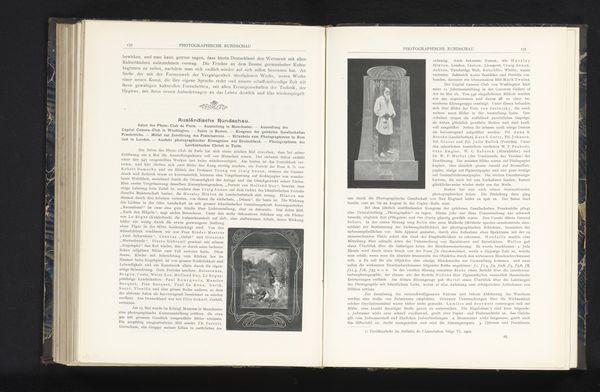
print, photography, photomontage
#
portrait
#
script typeface
#
type repetition
#
aged paper
#
still-life-photography
# print
#
editorial typography
#
text
#
photography
#
journal
#
photomontage
#
thick font
#
script guideline
#
handwritten font
#
historical font
#
columned text
Dimensions: height 67 mm, width 101 mm
Copyright: Rijks Museum: Open Domain
This is a photogravure, made circa 1900, possibly by Fred Holland Day, showing a biblical scene. The photogravure process involves coating a copper plate with a light-sensitive gelatin tissue, exposing it to a photographic negative, and then etching the plate with acid. Each printmaking process brings a different sensibility. The photographic negative is transferred onto a metal plate. Each print, like this one, is made by hand. What is the relationship between the rise of capitalism and the desire of photographers like Day to adopt and adapt "handmade" printmaking processes, which is slow and demands time and expertise? In the 19th century, photographic printing was industrializing, so the turn to photogravure could be seen as a way of slowing the medium down. This image gives us a glimpse of the late 19th-century dialogue between fine art, photography, and the Arts and Crafts movement.
Comments
No comments
Be the first to comment and join the conversation on the ultimate creative platform.
